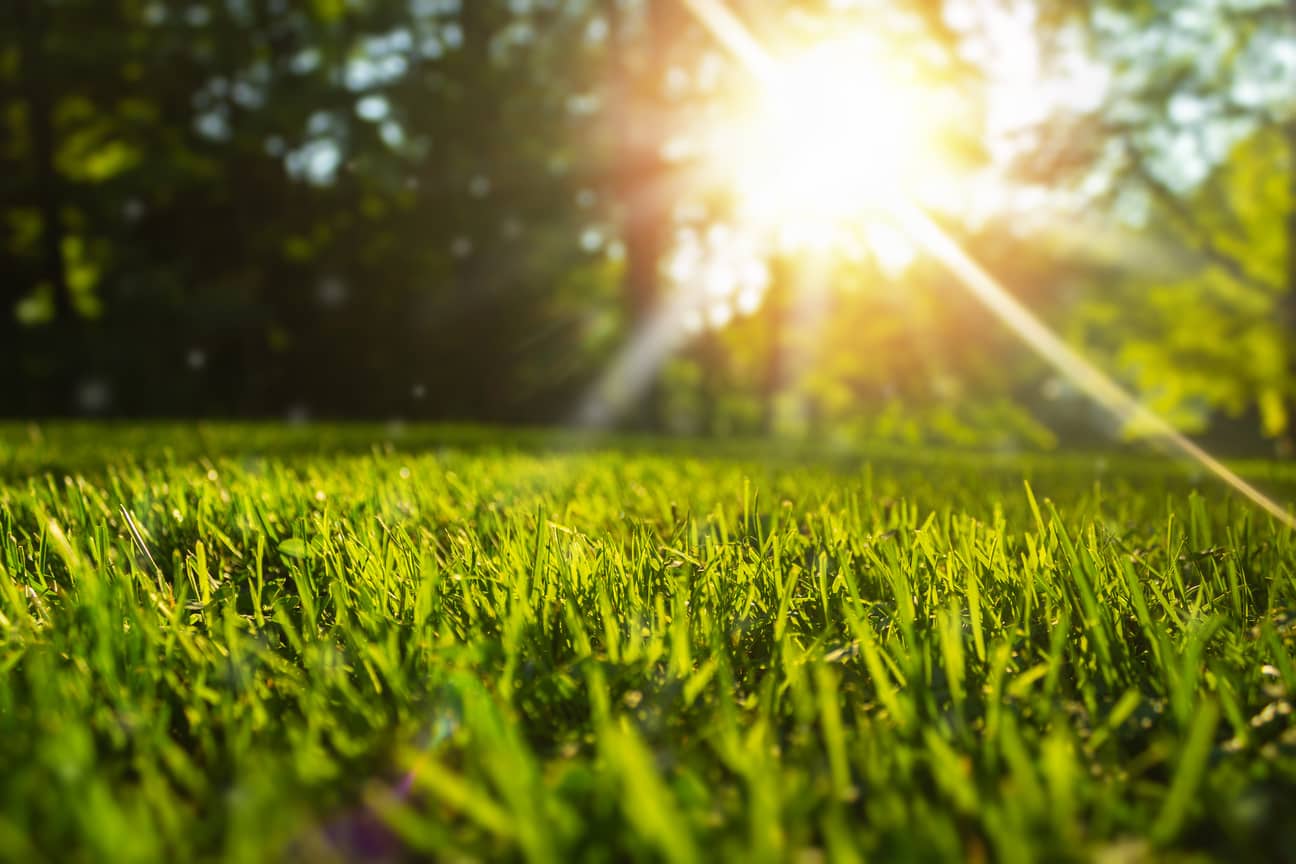
Landscaping is an integral part of creating a beautiful and sustainable home environment. A lush, green lawn is the centerpiece of many gardens, but achieving and maintaining this requires knowledge of how grass interacts with water and temperature. A common conundrum faced by homeowners is determining the threshold for heat that tips the balance from beneficial watering to wasteful evaporation. So, what temperature is too hot to water grass? By the end of the following sections, you’ll be confident enough on the topic to teach your friends.
What Time of Day is Best to Water?
On hot summer days, with the temperature hitting the 95-degree Fahrenheit mark or soaring even higher, patience is a virtue when planning to water your grass. The intense heat accelerates evaporation, which can leave your lawn parched despite your best efforts. Understanding the dynamics of temperature and moisture absorption is key to protecting your investment in your lawn.

The Dawn Advantage: Embracing the Cool of Early Morning
Early mornings offer a serene environment that is perfect for a cup of coffee and watering your lawn. The air is cooler and the winds are typically gentler. This creates an ideal setting for water to seep deep into the soil, right to the roots of your grass. Early watering prevents the sun from sapping away the water and gives your lawn a head start.
The Sunset Window: Hydrating Your Lawn as Day Cools
As the day winds down and the heat begins to dissipate, late afternoon provides another opportunity. By scheduling your watering routine between 4 PM and 6 PM, you’re allowing your grass to absorb moisture without the risk of overnight saturation. This balance is crucial. A lawn that stays wet overnight is an open invitation to diseases and pests looking for a damp sanctuary.
Tailoring Your Watering Schedule: A Strategy for Lawn Longevity
A common misconception is that more water equates to a healthier lawn. In reality, it’s the consistency and amount of watering that make the difference. Throughout the peak of summer, should get roughly one and a half inches of water each week. This amount encourages deep root growth while guarding against the wilting and weakening of your grass.
By dividing this weekly quota into three evenly spaced watering sessions, each blade of grass receives its fair share. This methodical approach not only conserves water but also nurtures a lawn that can stand up to the heat.
Other Recommended Maintenance
A successful lawn care regimen extends beyond the scope of watering. It involves a series of well-considered actions:
- Resisting the Urge to Overwater: It’s important to recognize that too much of a good thing can be harmful. Overwatering can lead to a plethora of issues, including the attraction of insects and the proliferation of mold, which can damage both the beauty and health of your lawn.
- Promoting Eco-Friendly Practices: A lush lawn is more than just a visual treat; it’s a commitment to environmental stewardship. Healthy grass plays a crucial role in capturing carbon dioxide, releasing oxygen, and supporting biodiversity within your garden.
- Designing with Purpose: Thoughtful landscaping isn’t just about aesthetics; it’s about functionality. A well-sloped lawn can act as a natural barrier, directing rainwater away from your home and safeguarding your foundation from potential water damage.

When to Call a Professional
In times when your grass seems to struggle, seeking professional help can be a game-changer. The wisdom of a lawn expert or irrigation specialist is often essential for diagnosing and remedying issues that homeowners miss.
These experts bring with them not only an understanding of the best practices in lawn hydration but also the ability to analyze the unique composition and pH levels of your soil, which play a significant role in how well your grass can utilize the water you provide.
Moreover, they can evaluate your irrigation system’s performance. Many homeowners struggle with inefficient systems that either drench their lawns, leading to waste and potential damage or don’t deliver enough moisture to keep the grass healthy during heat waves. An expert can pinpoint these problems and offer solutions that can range from simple adjustments to more comprehensive overhauls.
Beyond the technical aspects, a professional can offer tailored guidance that aligns with the specific needs of your lawn and local climate conditions. They can craft a watering schedule that not only quenches your lawn’s thirst effectively but also promotes water conservation, ensuring that every drop is utilized to its fullest potential.
Conclusion
To navigate the delicate balance of lawn care during the intense summer heat, timing is everything. Watering in the cool early morning or the milder late afternoon can help avoid hitting your grass with water that is too hot in temperature.
It’s important to avoid the pitfalls of overwatering, as this can lead to as many problems as drought. When faced with persistent issues or uncertainty, the expertise of a lawn care professional can be invaluable. Their tailored advice can ensure that your lawn not only survives but thrives throughout the hottest days of the year. By staying informed and proactive in your lawn maintenance, you can maintain a verdant and resilient landscape displaying thoughtful stewardship. Reach out to Atkinson Inspection Services can inspect your landscaping when performing a home inspection in Orlando, Clermont, and the Villages.



